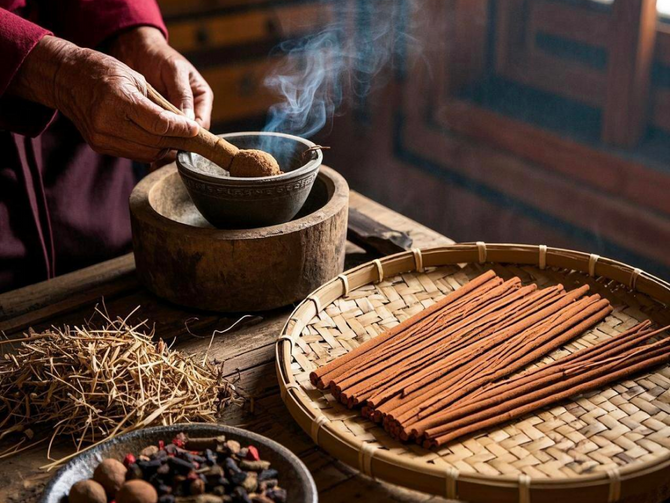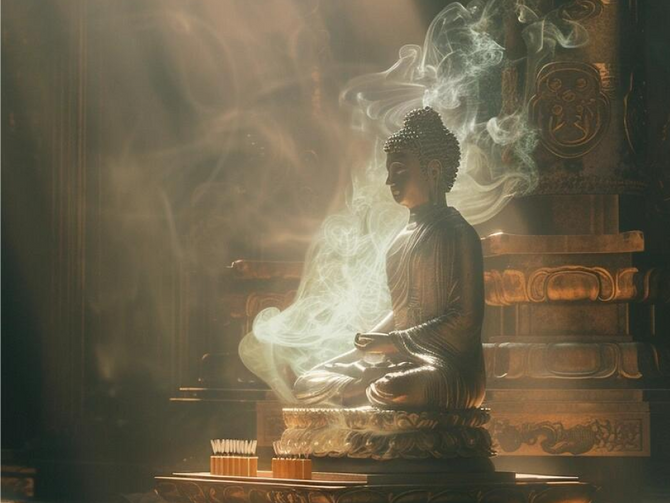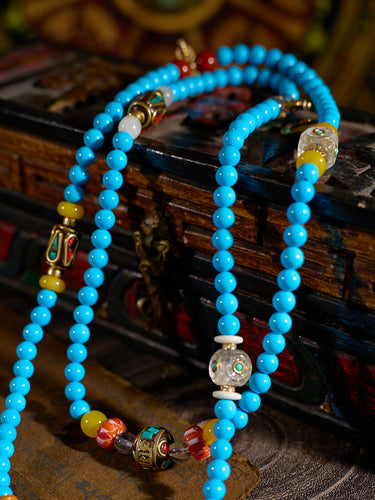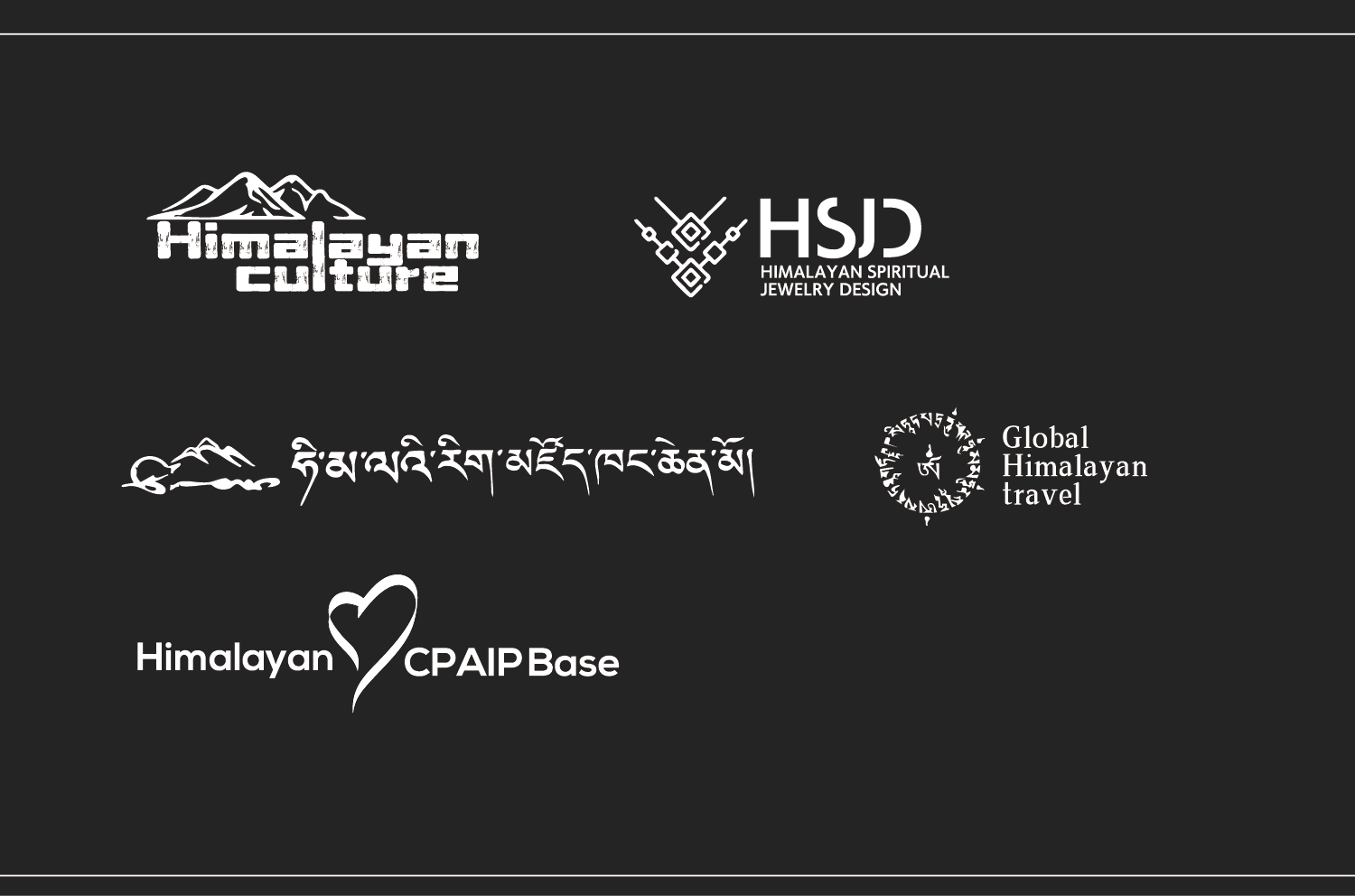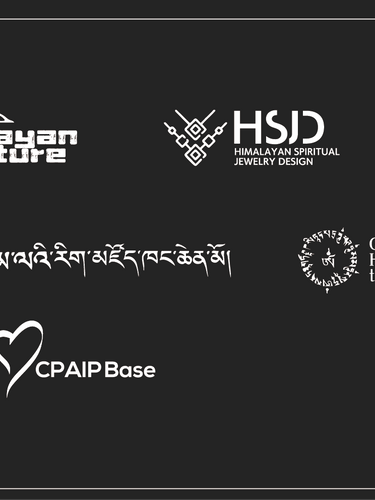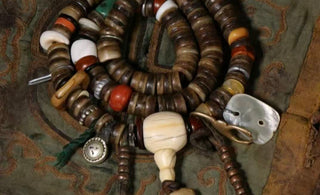
The Inner Geometry of Kailash and the Circle of Awakening
I. The Silence Beneath the Snow 🏔️
At the foot of Mount Kailash, wind
speaks a language older than words. It rises from glaciers, moves through
valleys, and finally rests upon the prayer flags that fringe the sky. There, in
that thin breath of air, pilgrims whisper the number 108 — not as a
count, but as a rhythm.
In the sacred lands of Tibet, numbers are not mathematics. They are vibrations.
And among them, 108 is the one that breathes. It turns in the same rhythm as the mountain itself — the unseen pulse between ascent and stillness, effort and surrender.
To walk a full kora — a pilgrimage circle — around Kailash 108 times is said to dissolve the wheel of birth and death. But for most, the true pilgrimage begins not on the mountain, but within. When the outer steps cease, the inner wheel begins.
And so, the mala of 108 beads was born: a mountain condensed into touch, a cosmic rhythm small enough to turn between two fingers.
II. The Meaning Hidden in the Number 🔢
In Tibetan Buddhism, 108 is the architecture
of liberation.
It maps the way consciousness moves through delusion, clarity, and return.
According to the ancient Abhidharma, there are 108 forms of human attachment — born from the six senses, three times (past, present, future), and the three poisons of desire, aversion, and ignorance.
Each bead on the mala is a doorway: when the practitioner touches one, another veil lifts.
But 108 is not just symbolic; it is energetic mathematics.
Tantric texts describe 108 subtle channels (nāḍī) radiating from the heart — the core where awareness and breath meet.
To turn the mala once is to circulate that flow fully through body and spirit, realigning one’s own rhythm with that of the mountain.
Thus, 108 is both the map and the movement.
A formula by which human life mirrors the cosmos —
and the cosmos, in turn, whispers itself back into the body.
III. The Mountain That Turns Within 🔄
Every bead is a world, every rotation a
revolution.
In Tibet, they say that the mala is a small Kailash, a way for those who
cannot climb to still complete the circle.
When a practitioner turns their beads, they are performing a miniature kora — walking the sacred path within their palms.
The thumb becomes the pilgrim, the beads become the mountain trail, and the heart becomes the sky.
At that moment, the external and internal dissolve into one motion.
The body does not move, yet the world turns.
That is the hidden truth of the 108: motion without distance, devotion without destination.
To complete a circle is not to finish, but to begin again — just as snow melts into rivers that feed the mountain’s roots.
Everything returns, nothing repeats.
IV. The Hand That Threads Time
Far from temples, in the shadowed villages
of Ngari, artisans sit cross-legged beside low fires.
Each bead is hand-drilled, smoothed with yak-butter oil, and threaded in
silence. The air smells of smoke and prayer.
These craftsmen do not speak of design. They speak of balance — of weight, tension, and breath.
When the thread passes through the final bead, they do not tie it immediately. They exhale first, then bow toward the direction of Mount Kailash.
“A circle must begin with humility,” says one old maker. “Otherwise, it will not turn.”
Their work is not art. It is continuity. Each mala carries not a signature, but a pulse — the shared rhythm between maker, monk, and mountain.
It is said that a mala threaded in silence will carry the sound of the artisan’s breath for a hundred years.
V. The Energy of the Circle ✨
Modern language calls it energy; ancient
texts call it lung — the vital wind that animates consciousness.
When a mala is held between the fingers, the pulse of the practitioner merges
with this wind.
The motion of the beads creates a current, a subtle rotation that stabilizes
both breath and mind.
108 beads complete one energetic cycle — one inhalation and one exhalation of the soul.
The circle acts like a mirror of the body’s inner cosmos, keeping chaos from fragmenting awareness.
It is no coincidence that the circumference of the Sun divided by its diameter is close to 108, or that the same proportion binds the Earth to its star.
The ancients saw in this number not coincidence, but resonance: the universe breathes in the same proportion that we pray.
VI. The Memory of Devotion 🌕
A mala grows old with its owner. The oils
of skin darken it, the heat of the pulse softens it.
Each mark is not decay, but record — the touch of meditation engraved in
matter.
In monasteries, old malas are never discarded. They are handed down like quiet witnesses.
A young monk receives one from his teacher, knowing that its beads have turned through decades of dawns, chants, and silences.
When he holds it, he holds a history of breath — a lineage of stillness that words cannot convey.
The mala, in this way, becomes not a tool but a companion — a small orbit of memory traveling through generations, carrying the same vow: to turn, and turn again.
VII. The Return to Stillness 🌙
When the practitioner reaches the final
bead, there is no end — only the faint recognition of return.
The first bead and the last are one.
The breath that began the circle is the breath that ends it.
This is the secret of 108: that all movement returns to stillness,
and all stillness hides an infinite motion.
Mount Kailash stands unmoving, yet every wind that circles it is part of its being.
So too, the human heart remains still while thoughts, prayers, and energy whirl around it.
To complete a mala is to echo the mountain —
to become the eye of the storm, the silence that holds the sound.
And when the mala rests, its circle continues — unseen, unbroken, eternal.
✦ Timeless Geometry. Endless Breath. ✦
From the snows of Kailash to the
stillness of your palm,
108 reminds us: nothing is separate, nothing is lost.


